It was a great day for spiders ...
... I mean, I don't know how the spider felt about that, if their day was really great ... I wanted to say that was surely a great day for photographing the spiders ... which means a great day for me :D
It started with this lovely, colorful species ...
... that I never noticed before ... and this morning I saw at least ten of these red spiders.
This is the Nigma flavescens, a Meshweb weaving spider (Dictynidae family). The color in this species, that builds mesh webs on shrubs and some robust herbaceous plants, varies from this vivid red to green and pale yellow with different darker markings.
Some minutes later, in the same area, I photographed another species that I never saw or photographed before ...
... the male Philodromus dispar, from the Philodromidae (Running Crab Spiders) family. This is a fast and agile ambush predator that doesn't build webs.
Just a few meters further ...
... on another blade of grass ...
... I found another interesting species ...
... Tmarus piger crab spider (Thomisidae family), an interestingly shaped species that I encounter regularly.
This is another ambush predators that waits for its preys camouflaged on leaves of grass or twigs of small trees and shrubs.
Nearby, the Synema globosum crab spider has caught a small ant. The morning was still humid, with dew in shady places, and the ant on the spider's fangs somehow ended up enveloped by a droplet of water.
The minuscule, very young Neoscona adianta spider from the Araneidae (Typical Orb Weavers) family ...
... was hanging on its thread above the interesting flower ...
... of the Heart-flowered Serapias orchid (Serapias cordigera) ...
... a pretty rare flower on these meadows.
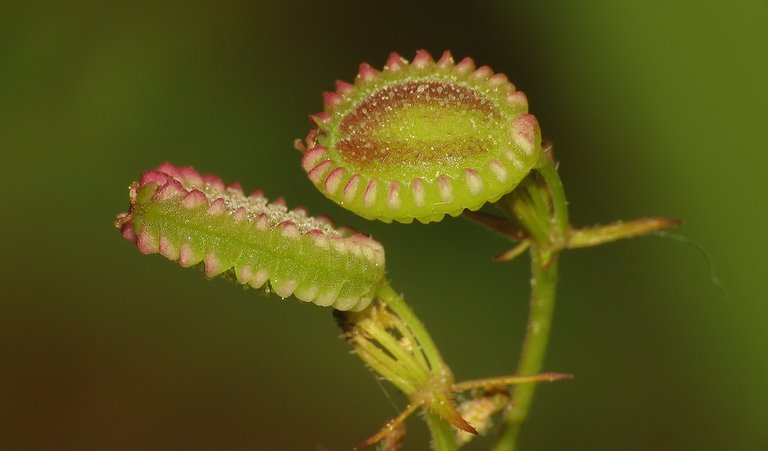
Nearby, I photographed two seeds of the Tordylium apulum, commonly known as Mediterranean hartwort, that grows in sunny open spaces, on a wide variety of different soils.
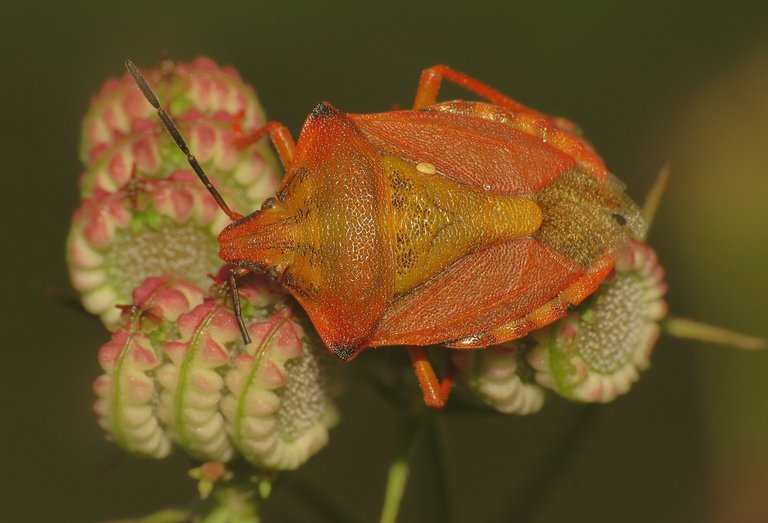
On another, bigger group of these seeds I found the colorful Carpocoris purpureipennis bug, a species that feeds on sap and nectar of various plants on the meadows.
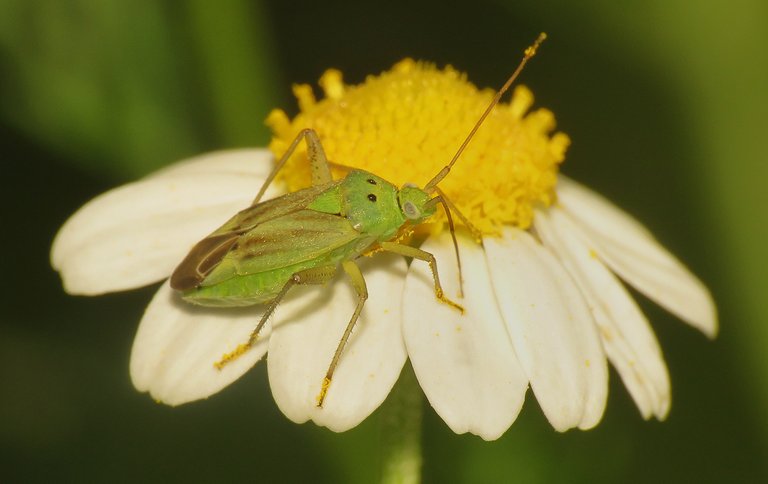
Anthemis arvensis flowers were growing all around.
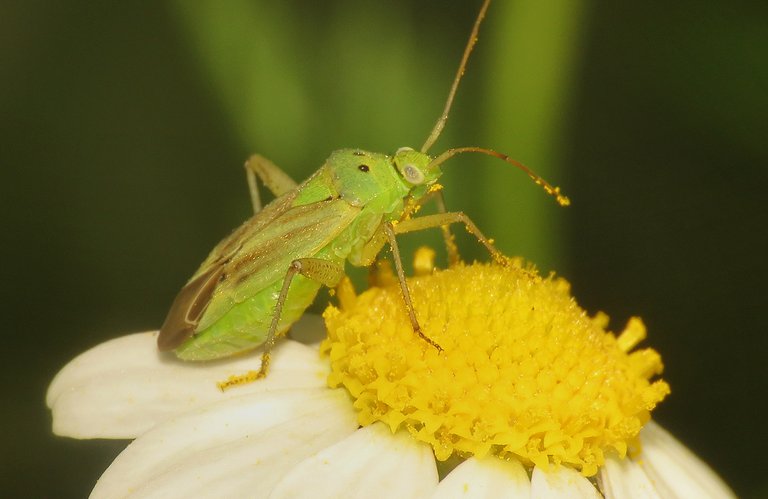
On those flowers I photographed the Closterotomus norwegicus, a bug from the Miridae family ...
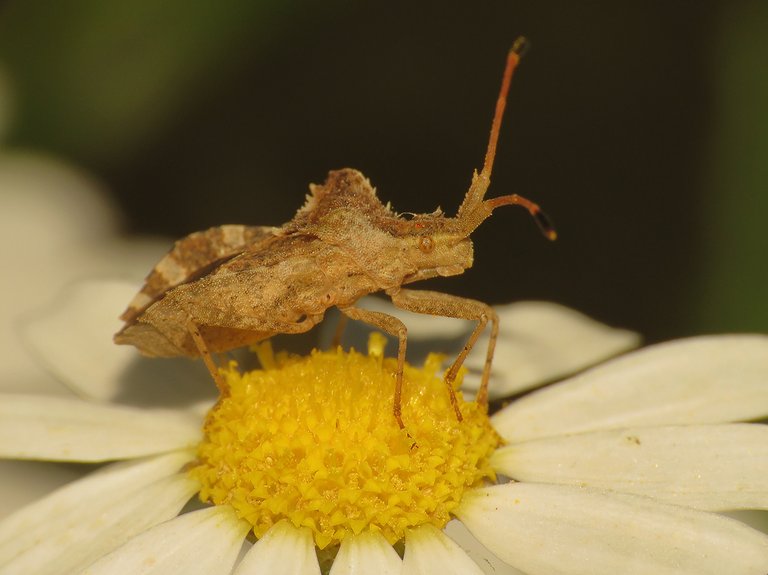
... the Centricoris variegatus bug ...
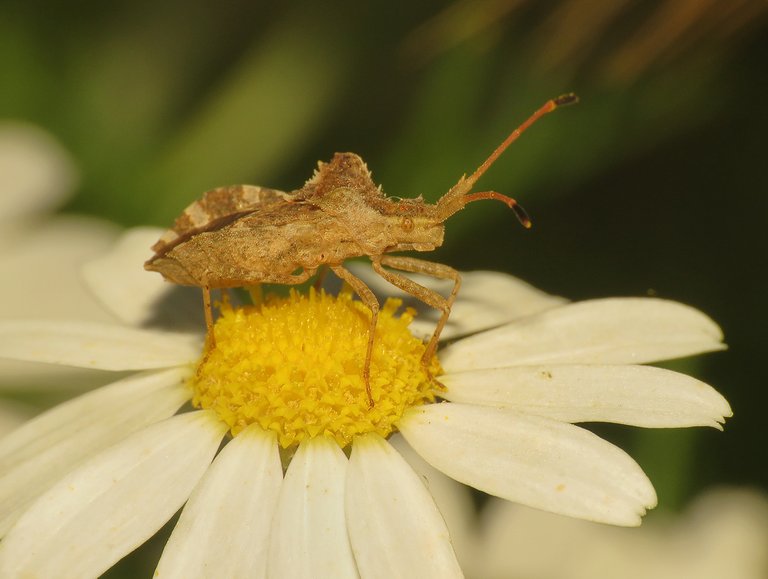
... from the Coreidae family ...
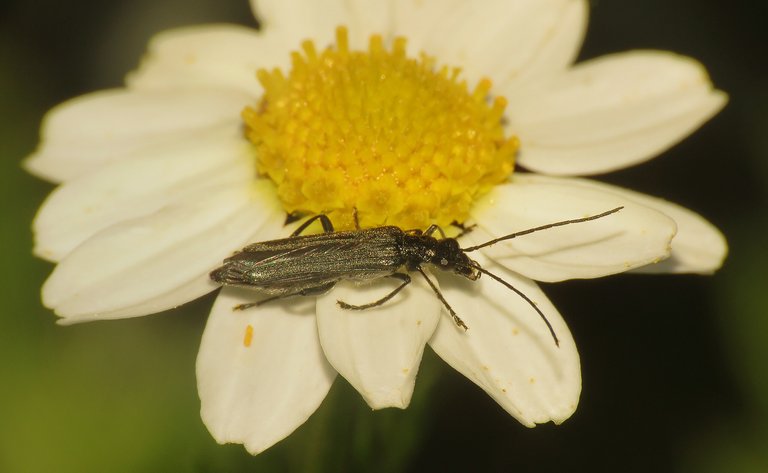
... the Oedemera lurida, a pollen & nectar eating beetle from the Oedemeridae family ... a family commonly known as "false blister beetles" ...

... and some minuscule, dark metallic - green fly ... probably from the Lonchaeidae (lance flies) family ... but I'm not sure ... maybe is the Lamprolonchaea smaragdi ... or not ... who knows :) I certainly don't.
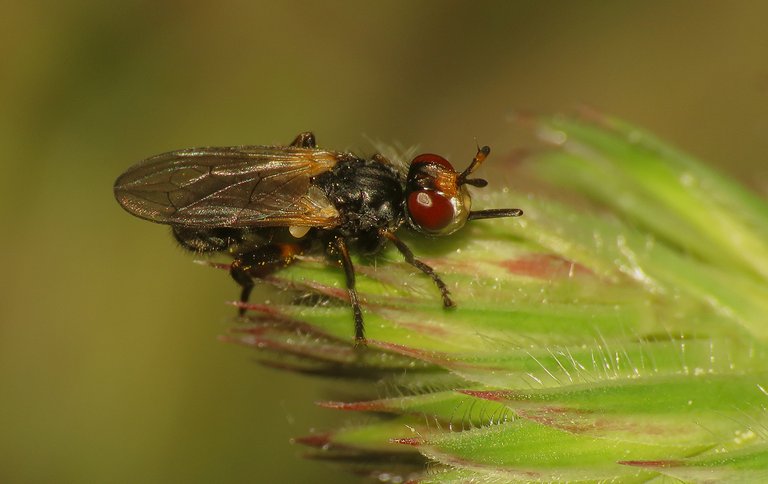
Half an hour later, on my walk through the meadow, I photographed this small fly from the Conopidae familly - the Thecophora atra ...
... and about 10 - 15 meters further, I came across another small fly, I don't know the name of the species or family, dead in a strange pose, high on the top of the grass.
This fly has been killed by a fungal disease. The parasitic fungus Entomophthora muscae has developed inside the fly's body, changed the fly's behavior, made the dying insect climb to the highest point on the plant, and now, on this enlargeable photograph, you can see the minuscule particles all over the dead fly, these are the spores ready to fall and infect other flies that are passing or resting underneath.
The Minettia fasciata fly (Lauxaniidae family) ...
... was feeding on some minuscule particles spread across some large leaf near the ground.
A few steps further ...

... another fly of that species ...
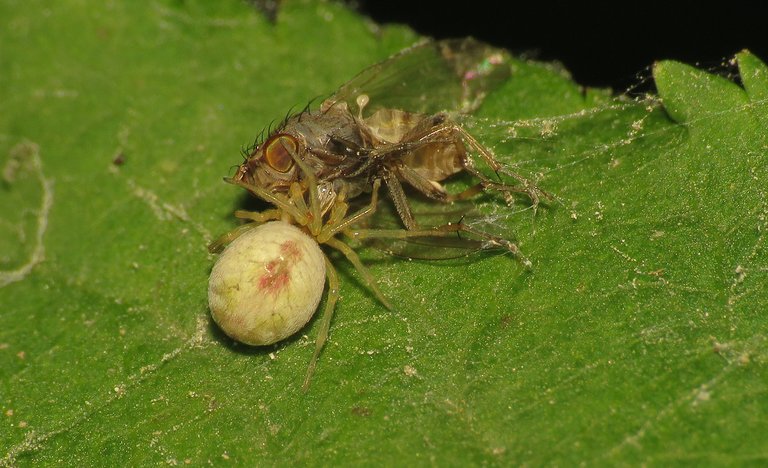
... ended up caught by a small spider.
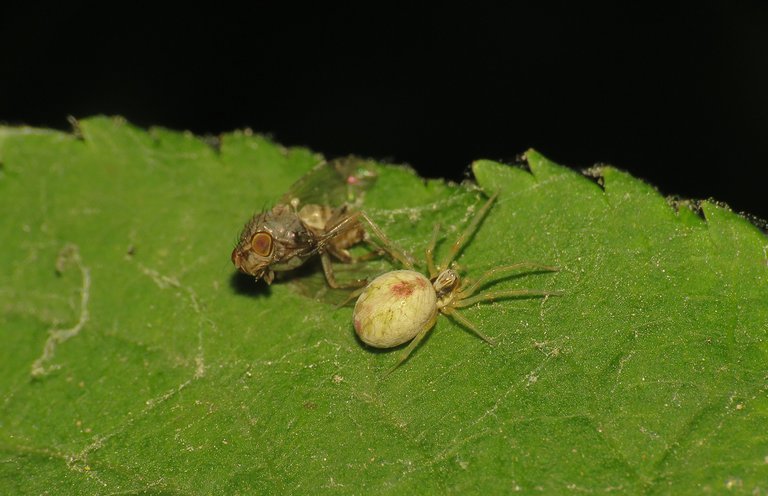
Here you can see the female of the Nigma puella, a meshweb weaving spider. After a minute or so of feeding ...
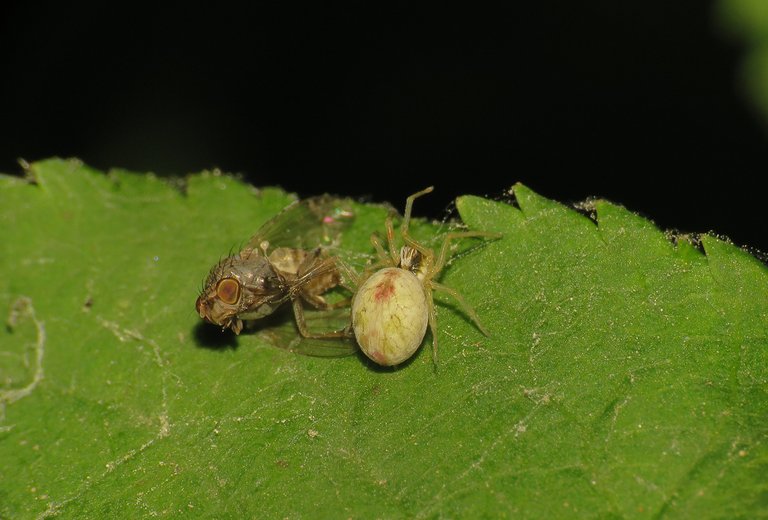
... the spider crawled under the leaf, to the lower surface of that leaf ...
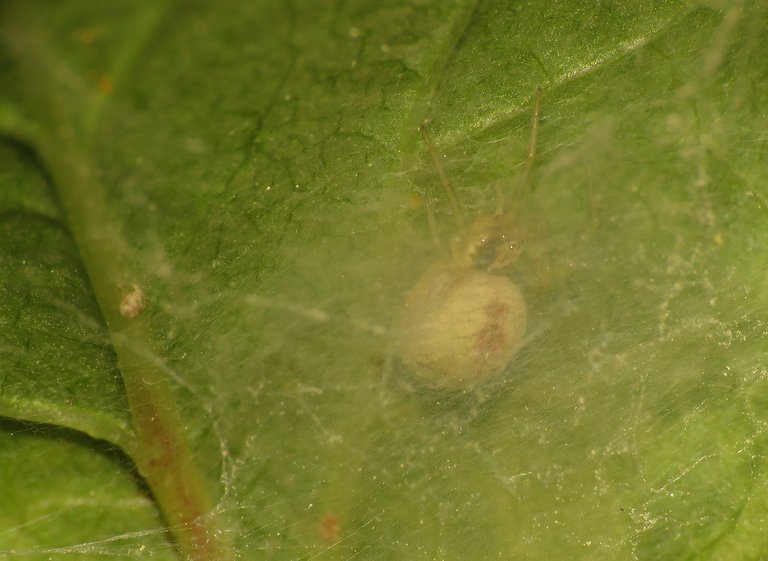
... and entered his silky shelter, to rest well hidden there.
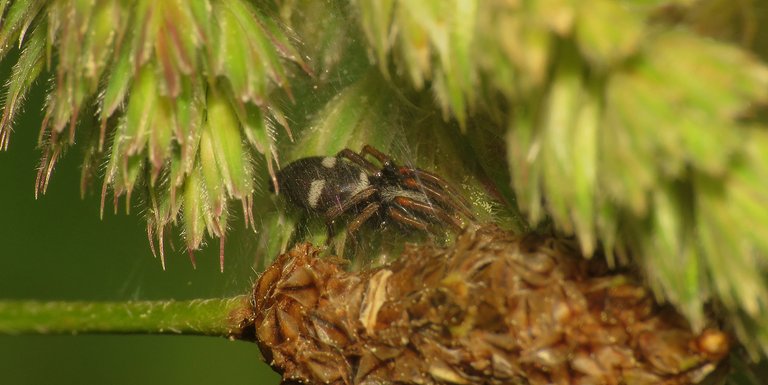
Not far from there I found another interesting spider species, resting behind the loose silky curtain.
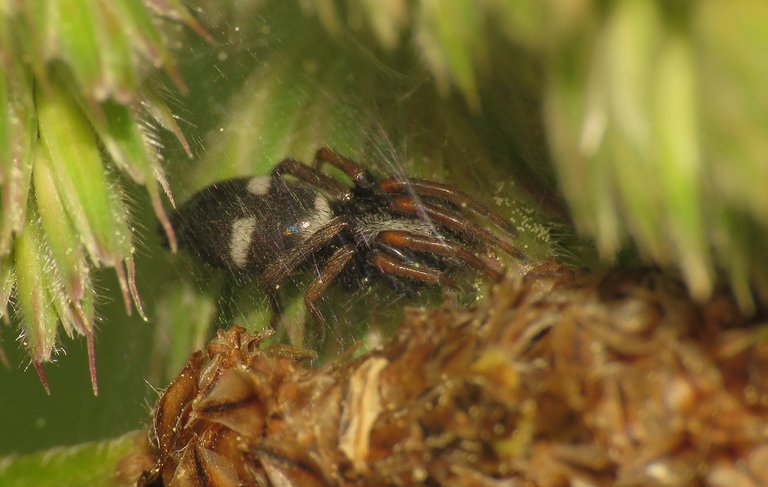
This is the Aphantaulax trifasciata, a ground spider (Gnaphosidae family) species.
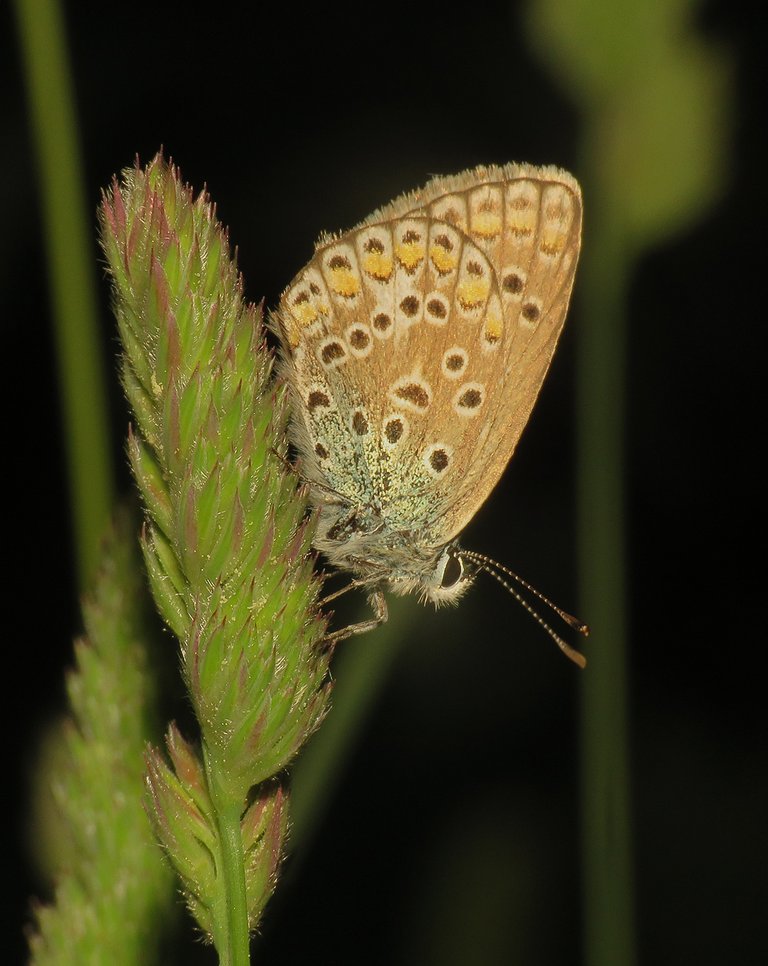
The meadows are filled with life these days, there is an insect or some spider practically on every straw, every leaf or flower ... the small blue butterfly from the Lycaenidae family, I don't know the exact name because quite a few very similar species are present in the area, was resting on the top of the grass ...
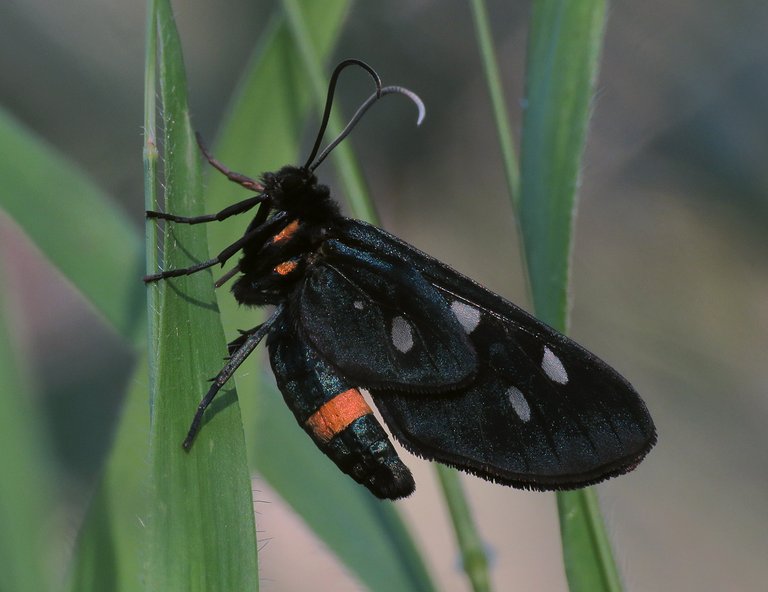
... Amata phegea, a diurnal moth species, was resting lower on the leaves of grass ...
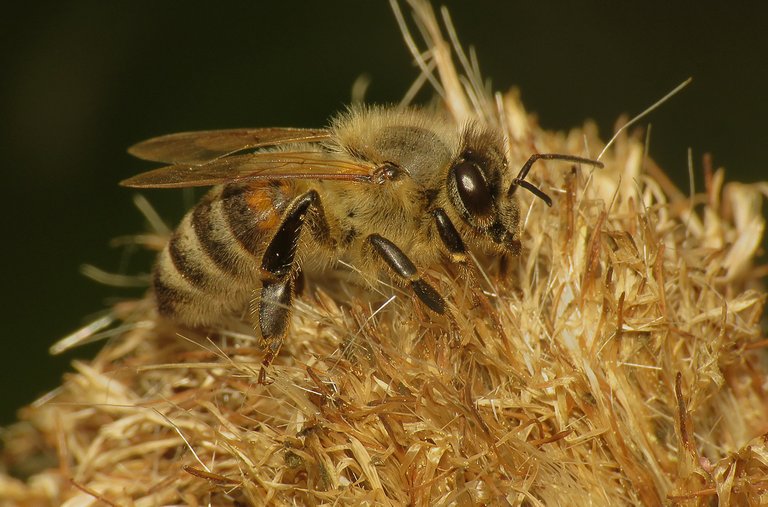
... this European honey bee (Apis mellifera) was photographed on the decaying thistle flower ... and was well camouflaged there, high on the top of the tall and robust plant ...
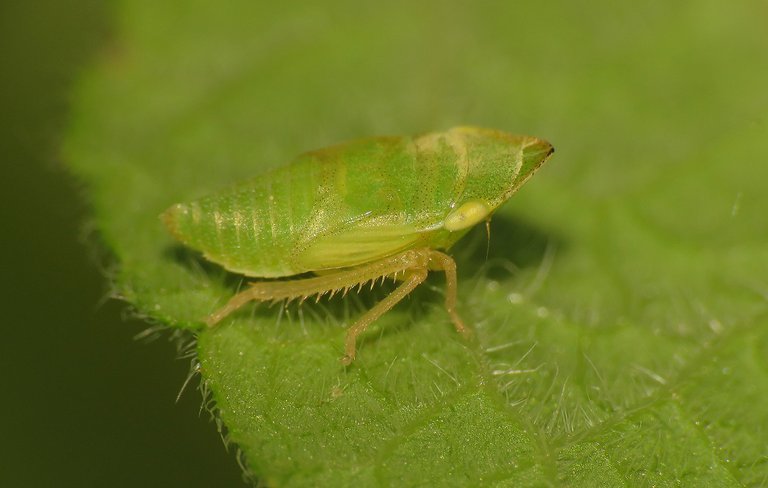
... while on some large green leaf near the ground ...
... I found and photographed the green nymph of some planthopper ... maybe the Dictyophara europaea planthoper, I'm not sure ... it looks a lot like wingless version of that species.
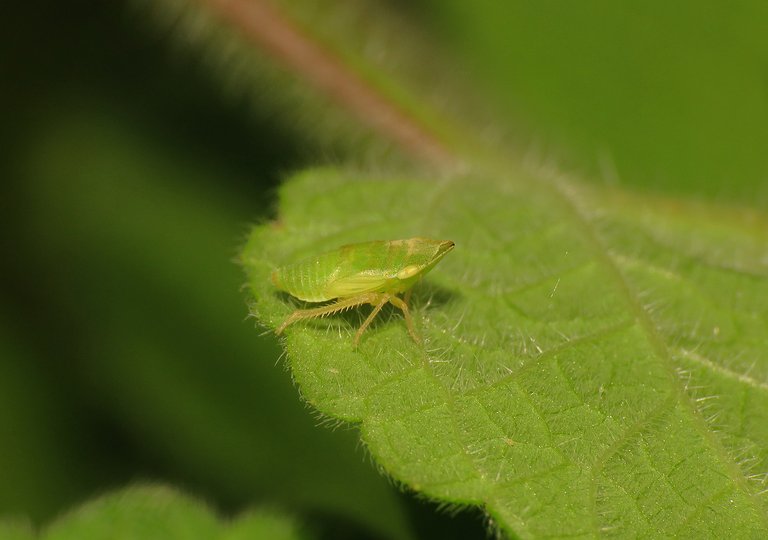
It had a very good camouflage for vivid green surfaces.
On the leaves of the neighboring plant I found a pretty cute, rounded beetle ... the Sphaeroderma rubidum from the Chrysomelidae (leaf beetles) family.
On this triptych you can see plenty of Salvia verbenaca plants and a multitude of their flowers that I photographed along the dusty road surrounded by meadows.
This wingless nymph of the Acrometopa macropoda bush - cricket was also photographed on the vegetation by the road as I was walking back to my car.
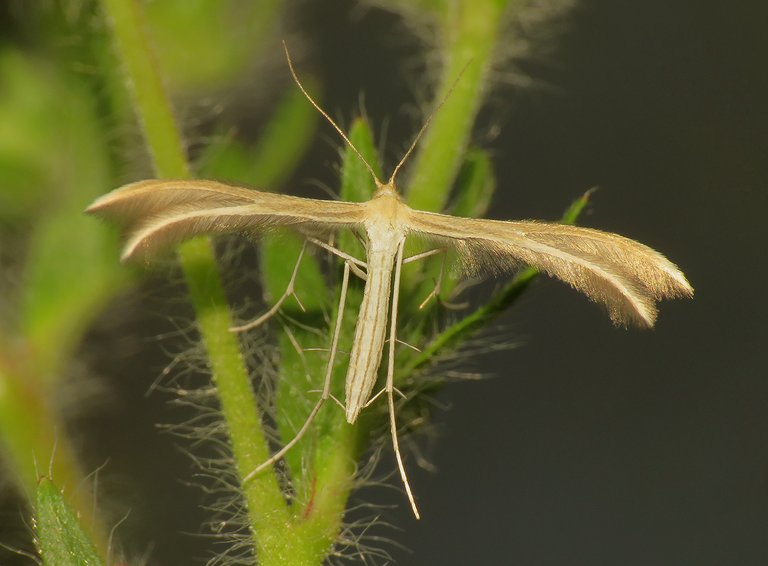
I decided to return home, but that walk to the car ended up being very slow and long because there was always something interesting to photograph along the way ... like this Merrifieldia leucodactyla plume moth ...
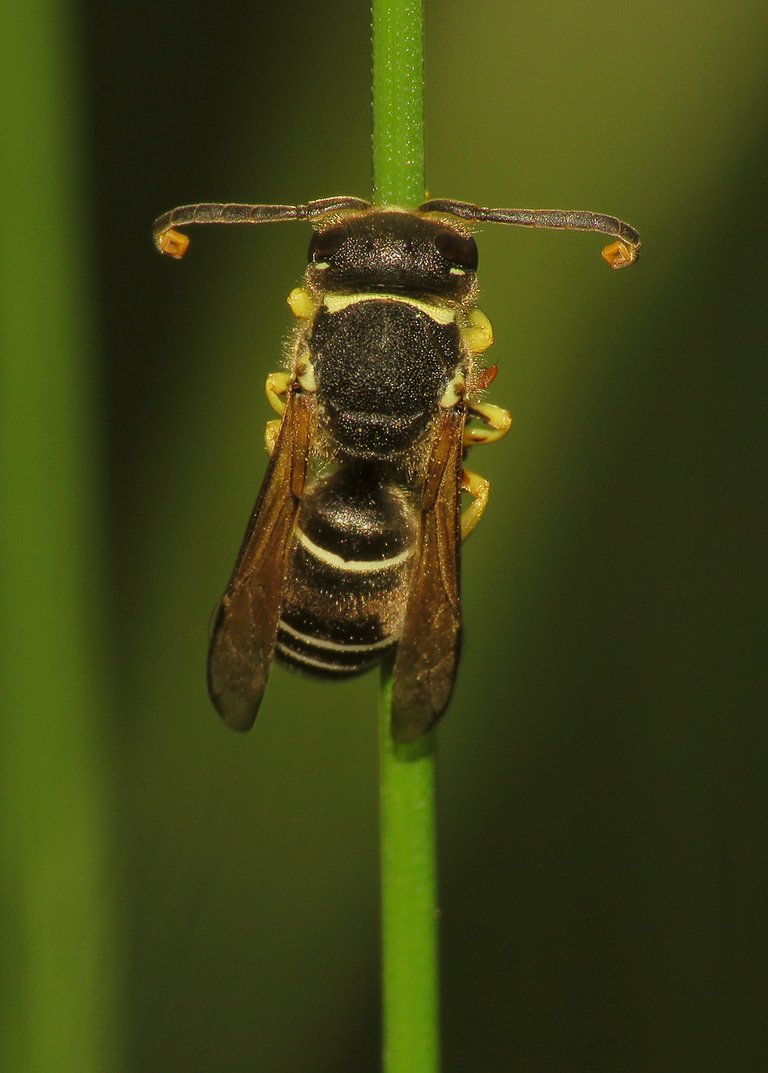
... or this ... this ... well, I don't know what is this exactly ... some kind of wasp ? A nomad bee? Some sawfly species? ... I don't know ...
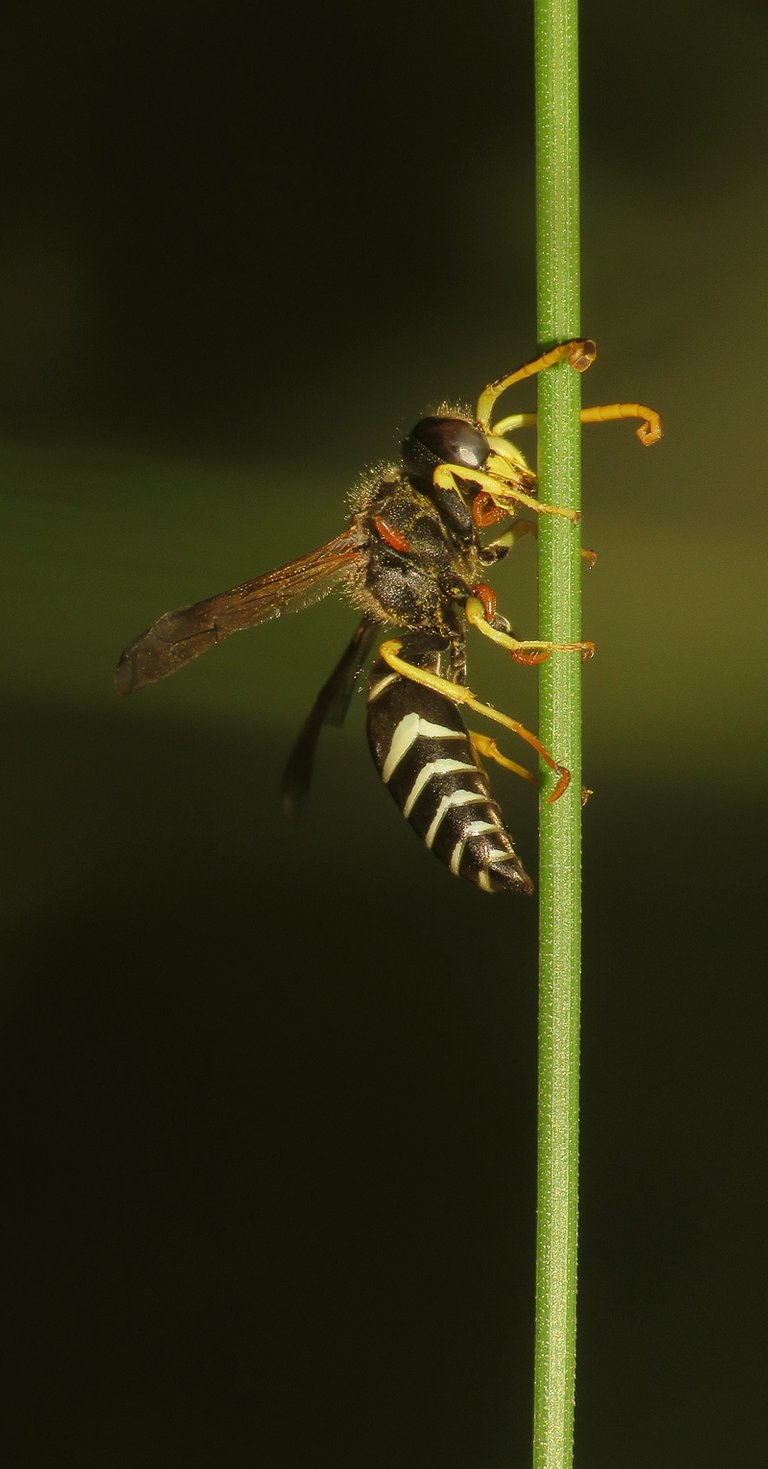
The insect was covered with some minuscule, vivid - orange creatures that looked like rove beetles or some kind of larvae. I didn't notice them while photographing, but only later at home, when I enlarged the picture on PC.
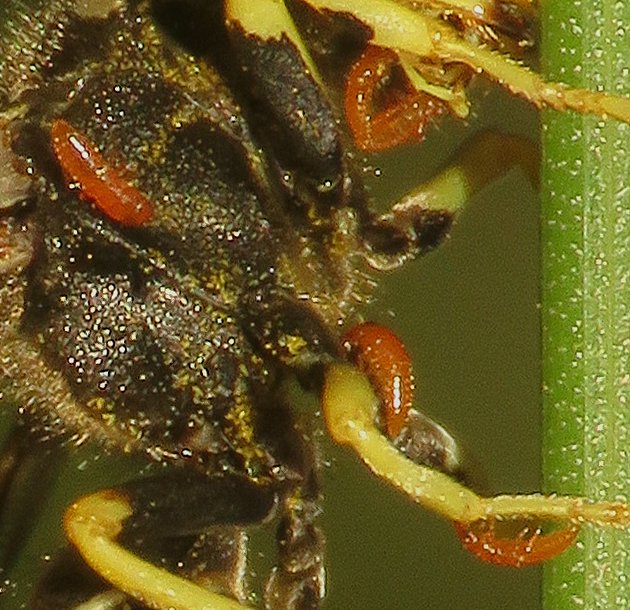
Here you can take a look at the cropped detail. I don't know what are these.
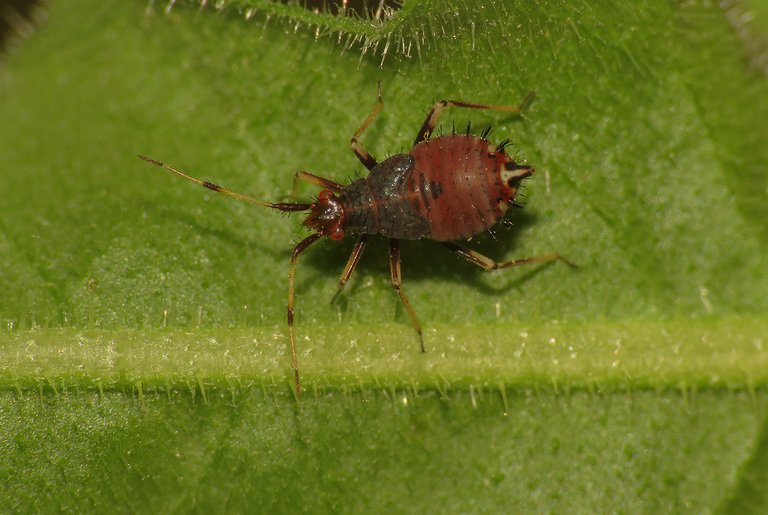
The small nymph on this and the following photograph ...
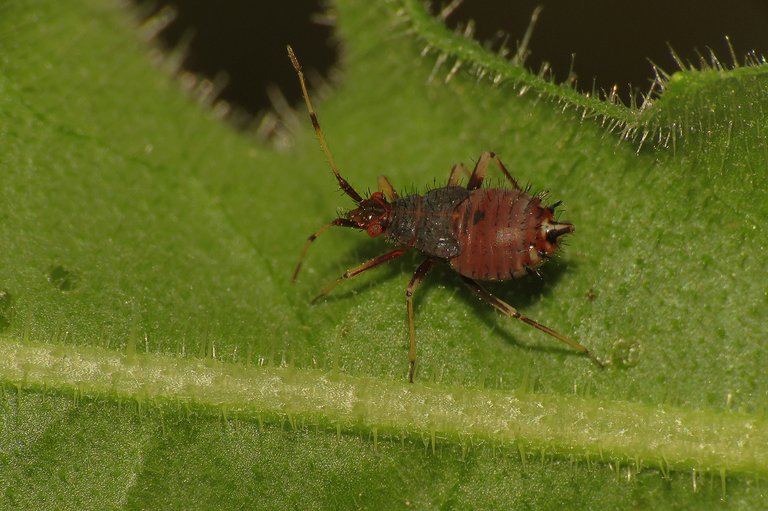
... is the young, wingless version of the Deraeocoris ruber bug from the Miridae family.
When I arrived to the green wall made of intricate growth of thorny shrubs and small trees, near which my car was parked ... and where the open meadow ends ...
... I photographed the Coremacera marginata fly from the Sciomyzidae family. The larvae of this species prey on terrestrial snails - the adults feed on nectar and various sweet liquids.
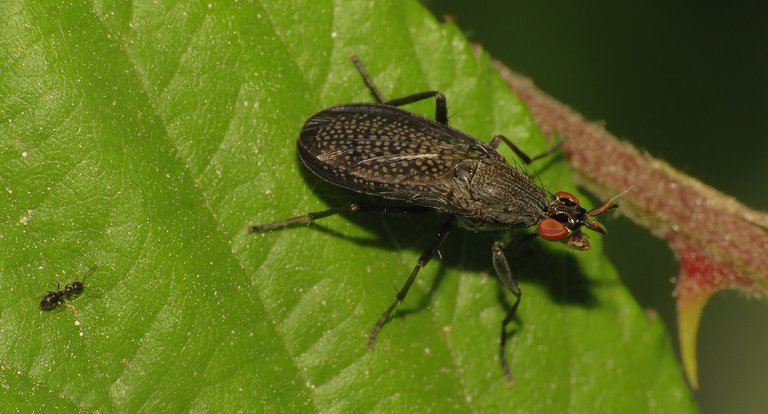
After taking these shots on the leaves of the blackberry shrub, I was driving home ... to eat something and prepare this post.
As always in these posts on HIVE, the photographs are my work ... and as always in this NEWS FROM THE MEADOWS series, they were all taken today.
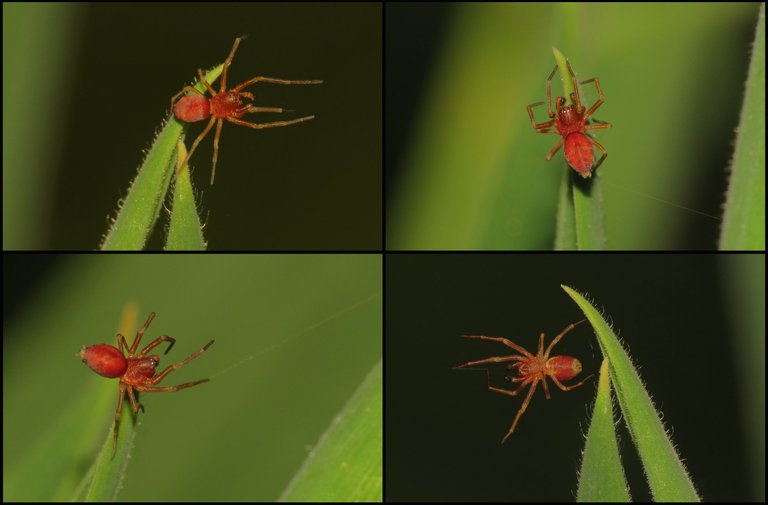
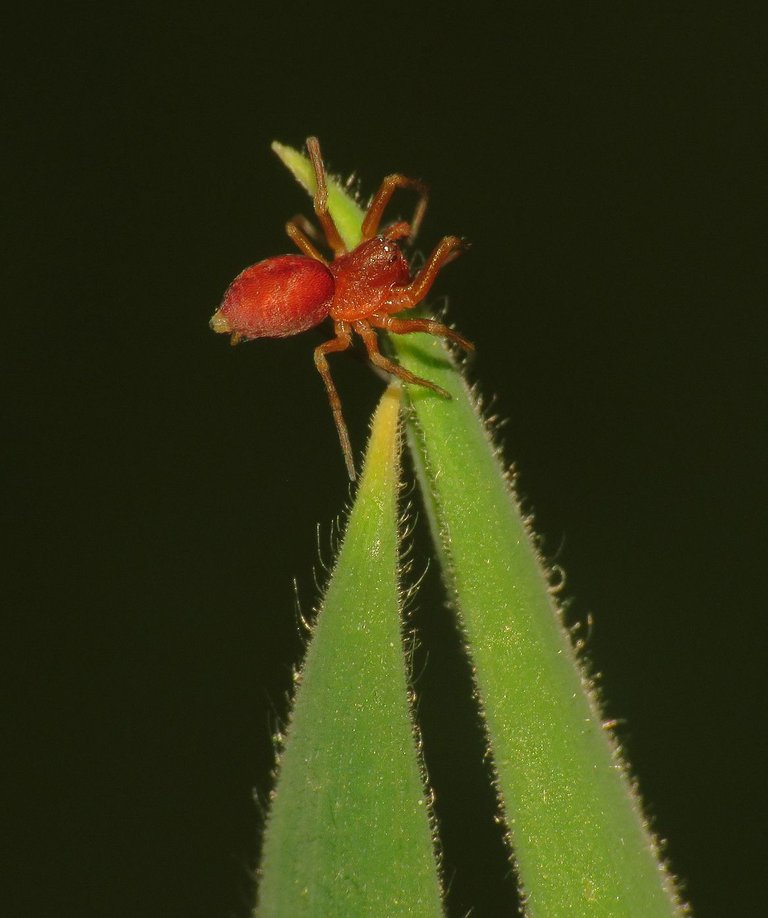

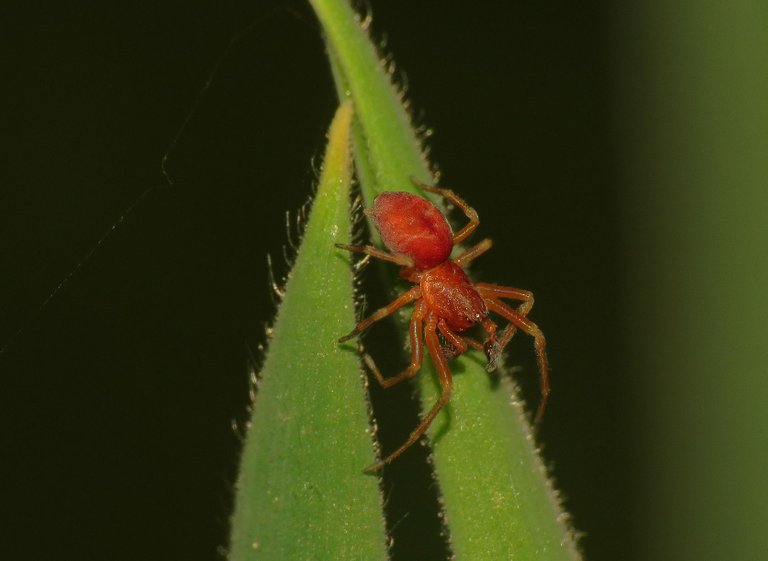
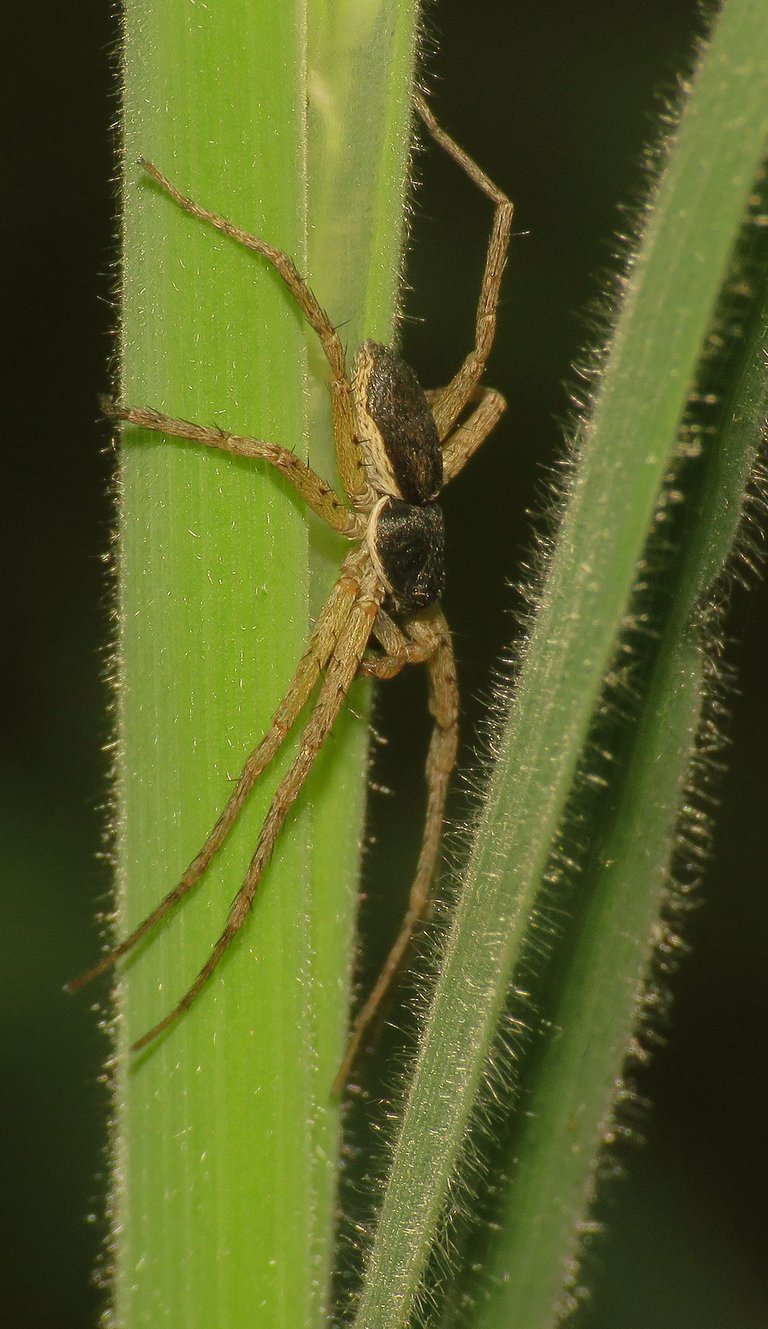
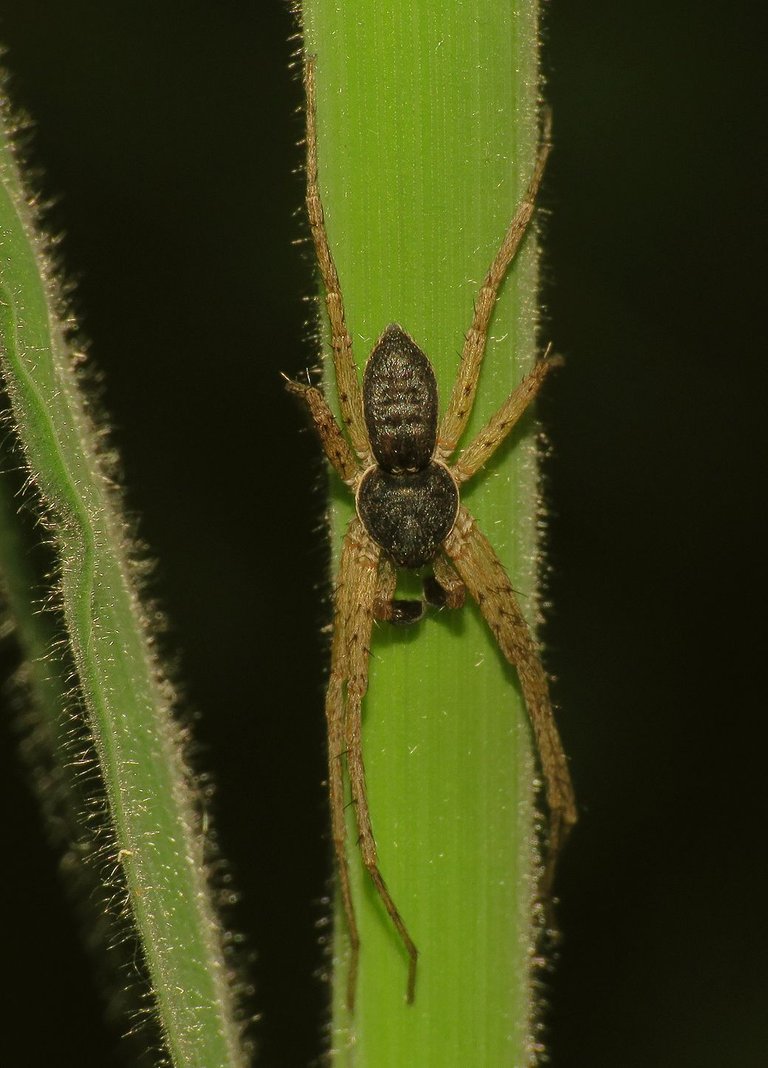



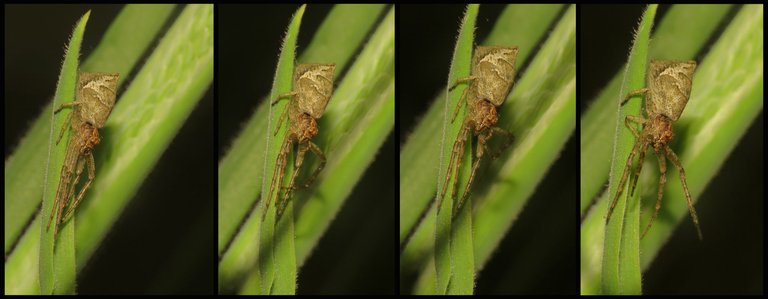
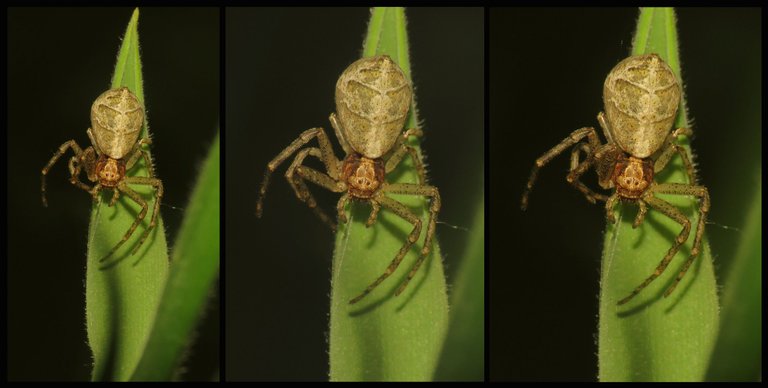
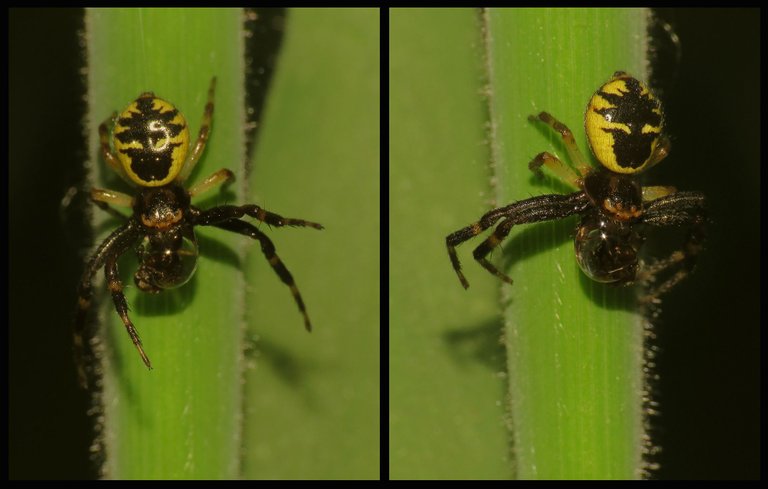
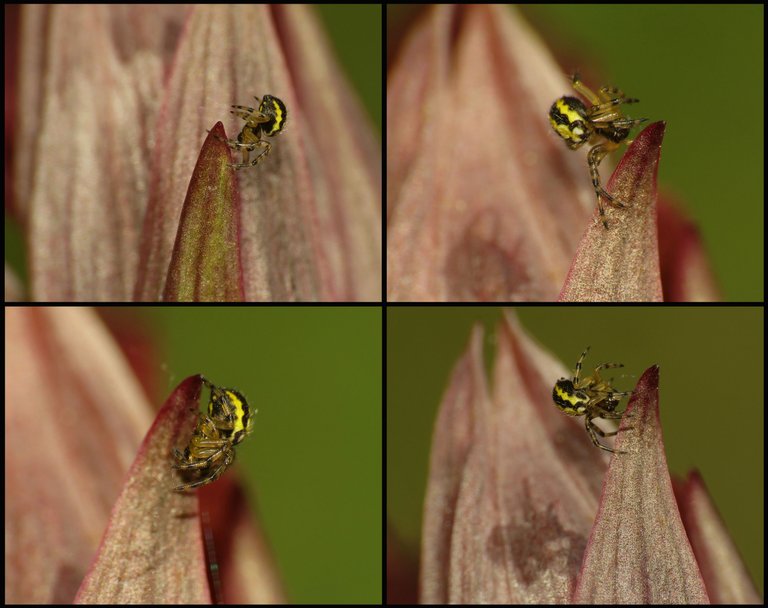





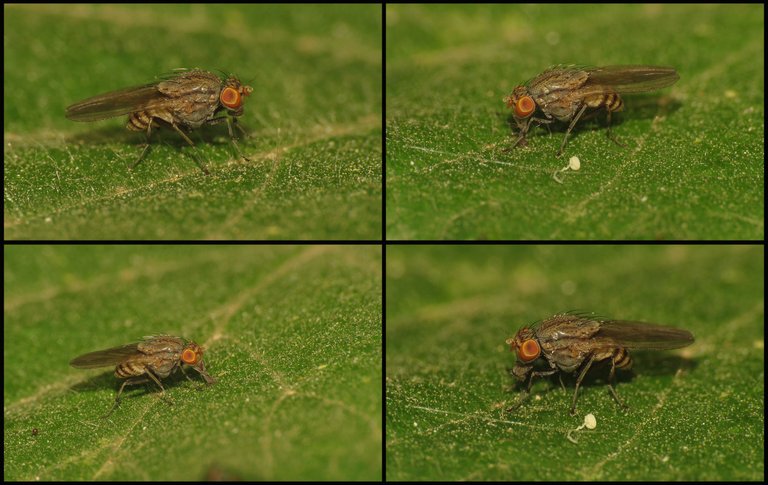
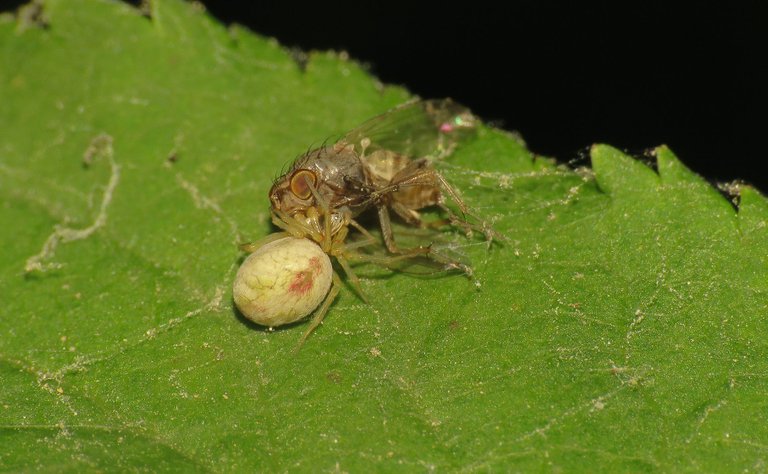
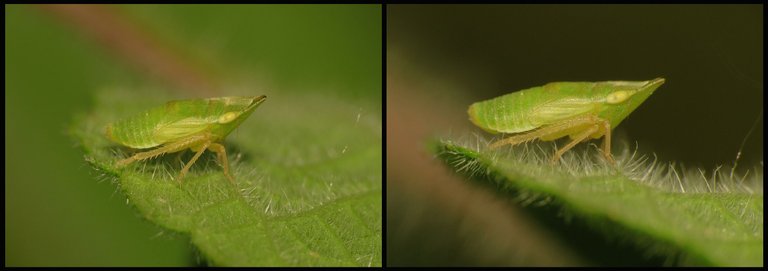
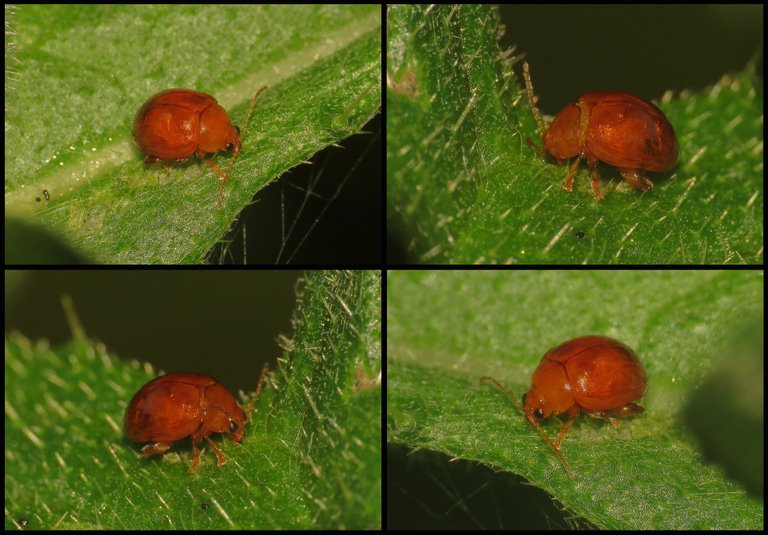

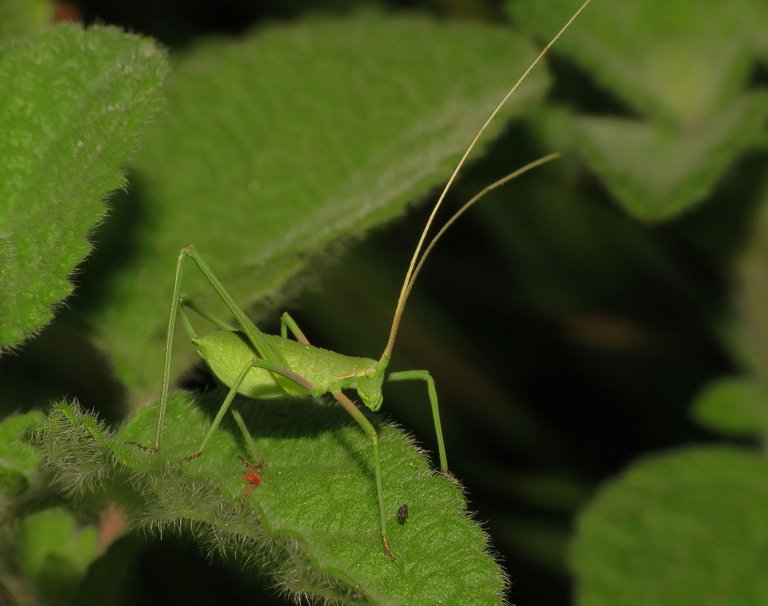
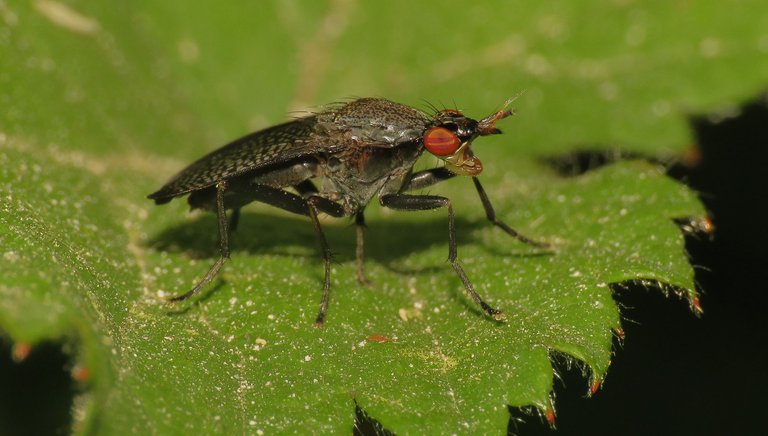
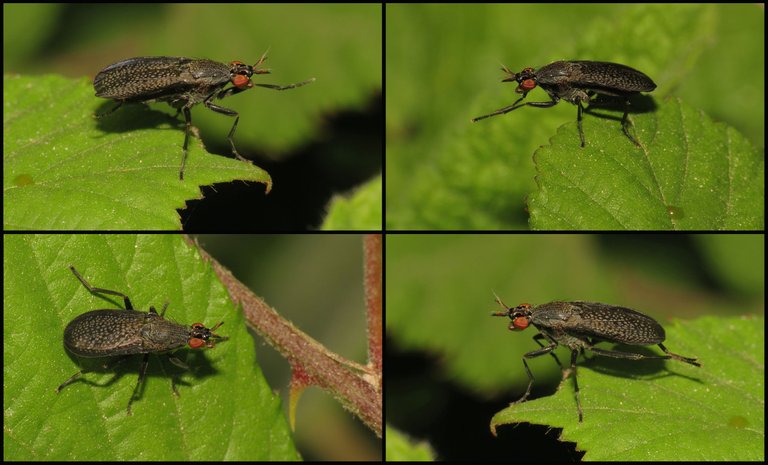
Never heard and seen most of the above species. I am glad you are sharing this. Its interesting and knowledgeable. Loved the photography, you are awesome at capturing the details. Keep up good work dear. 😊🙏
I sure hope the site fixes the photos. Half the posts today had messed up photos... sigh...
I think it will be fixed soon, usually doesn't take long.
@borjan
this photos are absolutely beautiful...
What do you use in capturing this moments because I if you go close to some of these insects they might hurt you or sting you.
Or may I ask if you are a botanist?
amazing work mon ami
Thanks :) glad you like this report from the meadows in my area.
I'm not a botanist, nor entomologist … just a total amateur in these biological stuff ... I have some education in visual arts and I like the nature, wilderness, biodiversity, there it's nothing more interesting than that to me ... I always go very close to what I photograph, there is no big danger of getting stung or bitten, most of those insects and spiders won't bite you if you approach them ... and even if they do bite or sting, only a few species here are dangerous.
I'm using the Canon PowerShot SX60 HS camera ... and Raynox DCR-250 Super Macro Snap-On Lens.
Hi @borjan,Your photos show every detail of these little friends, well you know that I respect these animals or it will be that I am a crybaby :) They do an excellent job in nature but some also have an excellent way of defending themselves, your post is very interesting and very illustrative too , we learn with you
Greetings, well I found where to place my comment, you are a good person and I like your publication.
Thank you :) Glad you like these photo stories about flora and fauna. Have a great day.
Fantastic shots as always. You never fail to share your amazing photos with us.
Thanks. :) Glad you like these reports about flora and fauna. There is a lot of life in this part of the year here, so I'm trying to enjoy that colorful atmosphere before another winter comes.
I remember sharing a photo of a spider that caught a fly. I think I would have cropped it to be very close just like you did here or rather, go closer to take the shot.
Or should it be cause I used a phone? Wish I could get a camera.
It depends on the phone, I saw some phones that take photographs like a good camera ... there is also a macro lens for phones ... to get very close and take a picture that looks close without cropping, some kind of macro lens is necessary ... cropping is also ok, especially if picture is high quality, big resolution, than a crop can also look good and sharp. I have no experience with phones, I don't use one ... not only I don't use it for photography, I don't have one ... last time I had a mobile phone :) was in 2002 or 2004 and phones were pretty different ... now I see people taking great, sharp and vivid pictures with a phone.
Like seriously you don't have and don't use a phone? Sounds surprising to me. So how do you make calls? With your laptop?
I am going to explore my phone's camera to see if it has macro lens. I haven't tried viewing its camera features. I just my shots outright.
Hehehe full seriously ... I don't take or make calls for years now ... beside the face to face talking with people close to me, all the communication goes in written form, through e - mail and messenger inside the Facebook ... :) I communicate a bit here too, through these comments.
One of my friends here has a small macro lens that can mount on the phone ... he bought it a month ago cheap on the Internet, it took a month to arrive here, and it works pretty good.
Oh well, that cool anyways. To in times of emergency or urgency, you go through this way?
I would like to the model of the macro lens and what it could cost, so I could consider getting mine.
Excelent post ;))
Judging by the number of beautiful photos in this message (which is 100% of all photos) - the day was really very good for you. The photos are amazing!
Thanks, :) these days the nature here is at its maximum ... hyperproductive, colorful, if you have a macro lens, there is something interesting to photograph on every inch of terrain.
It was worth coming back to see the photos! Good thing I like spiders. :))
:)